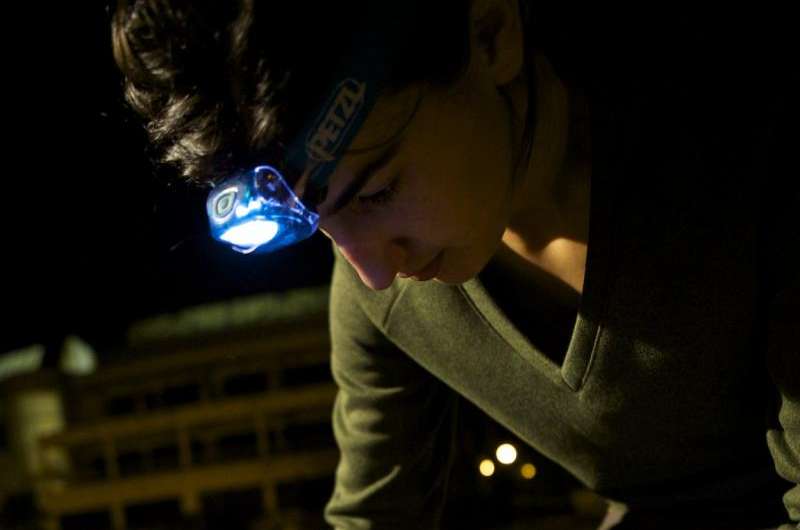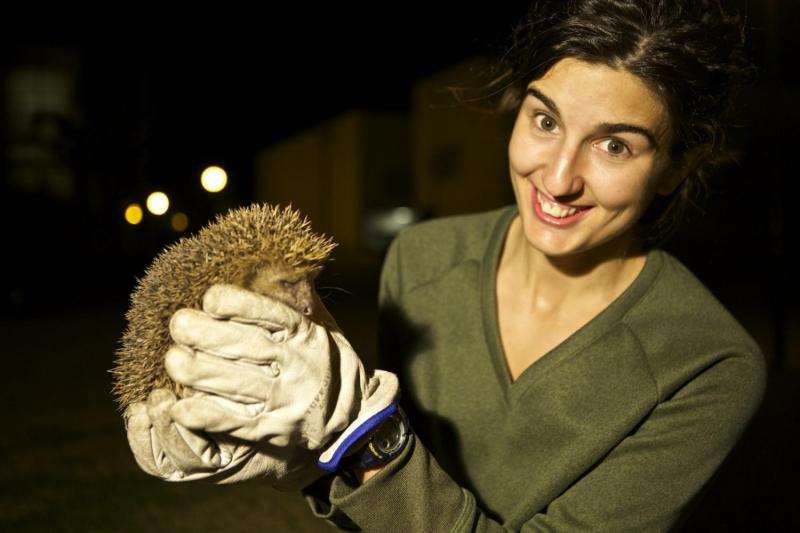Jana Marco, studying hedgehogs at the Univeristy of Alicante
Researchers at the University of Alicante have been monitoring the on-campus hedgehog population and found some unusual behaviours.
For the past three years, Jana Marco, biologist and PhD student, and Germán López, professor, both from the department of Ecology at the Universidad de Alicante (University of Alicante, UA) have been observing the European hedgehog population at the university's San Vicent del Raspeig campus. It is the first study in Spain into the adaptation of wild fauna to urban habitats that takes the hedgehog as its subject.
The European hedgehog (Erinaceus europaeus) is found across western Europe and is usually associated with urban and peri-urban contexts. Its home range –the area over which an animal or group of animals normally travels and searches for food– in mild climates has been studied, but little research has been carried out into Mediterranean populations. The hedgehog population on the Alicante university campus in south-east Spain offers up the opportunity to observe the behaviour of this mammal in hot, semi-arid climate conditions.
And it turns out that these hedgehogs do not hibernate. For a hibernating creature, the hot climate of Alicante means that food is available all year round. Not to mention that in the case of the university campus, hedgehogs have stumbled across an alternative food source which for them is a veritable banquet: food left out for street cats.
Jana Marco, biologist and researcher at the Univeristy of Alicante
To carry out their study, UA researchers tagged and monitored the campus hedgehog population, made up of around 25 individuals. They were looking at various aspects of the relationship between climate and life-cycles (reproduction, hibernation, etc.) at this latitude, as well as survival rates and possible causes of death in urban habitats.
López confirms that the project "is yielding data on how a wild fauna population, like that of the European hedgehog, adapts to the urban setting and how this new habitat affects their biology".
In another of the project's lines of research, radio tracking was carried out in the spring-summer of 2014 with the goal of establishing the effects of sex on the size of the home range. In total six hedgehogs, three of each sex, were tagged with radio emitters and monitored for three consecutive nights.
Their nocturnal wanderings revealed that there are clear differences between the areas travelled by the different sexes, with the males covering much more ground. This radio tracking also revealed a bimodal pattern of nocturnal activity, with peaks of movement at the beginning and at the end of the night.
Currently, Marco and López are collaborating with Alejandro Romero, from the UA's department of Biotechnology, to analyse patterns of dental erosion in the hedgehogs in this type of habitat. Marco explains: "We hope to develop criteria for estimating the age of the hedgehogs based on dental erosion, which could also differ between wild and urban populations, whose respective diets have different physical and mechanical characteristics".
"Our next objective is to establish an intervention protocol to protect the campus hedgehogs in the event someone comes across a litter, as well as contributing to environmental education, through a webcam positioned in a den, so that anybody interested can follow the hedgehogs' activities", she adds.
Provided by Asociacion RUVID





.jpg)


















